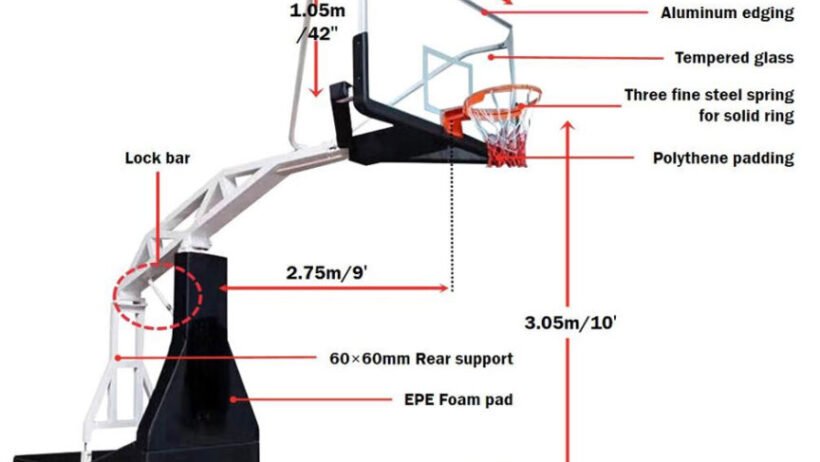From the thunderous slam dunks that shake the backboard to the graceful three-point shots that swish through the net, the basketball hoop is the focal point of the game. Yet, for many, a simple question remains: just how tall is the basketball hoop in the NBA? The answer is a universally recognized standard that has shaped the sport for over a century.
This article delves into the official NBA hoop height, exploring its historical origins, the dimensions of its components, and its profound impact on the game. We will also touch upon how this standard is adapted for younger players, providing a comprehensive look at this fundamental aspect of basketball.
The Official NBA Basketball Hoop Height: A Constant Standard
The regulation height of a basketball hoop in the National Basketball Association (NBA) is exactly 10 feet (or 3.05 meters) from the court surface to the top of the rim. This measurement is a constant, applied consistently across all professional and most amateur levels of the game, ensuring a level playing field.
Despite occasional debates and discussions about raising the hoop to accommodate the increasing athleticism of modern players, the 10-foot standard has remained unchanged. This consistency dispels any myths about varying hoop heights in different arenas or for different levels of play.
A Look Back: The Historical Roots of the 10-Foot Hoop
The 10-foot height dates back to the very invention of basketball in 1891 by Dr. James Naismith. When he first devised the game, he nailed two peach baskets to the railing of a running track at a YMCA gymnasium. The height of that railing just happened to be 10 feet.
What began as a matter of convenience soon proved to be an ideal standard. The 10-foot height offered a perfect balance of challenge and achievability, testing players’ skill and athleticism without making scoring an impossible feat. Over time, this informal measurement was codified into the official rules of the sport.
Beyond the Rim: Understanding Related Dimensions
While the height of the rim is the most cited dimension, other components of the hoop are also standardized to ensure fair play. The NBA backboard measures 72 inches (183 cm) wide by 42 inches (107 cm) tall, providing a consistent target for bank shots.
The rim itself has an inner diameter of 18 inches (46 cm), and the white cord net hangs 18 inches (46 cm) in length. These precise measurements are crucial for maintaining the integrity of the game and ensuring that every shot is judged by the same criteria.
The Impact of Hoop Height on the Game
The 10-foot standard has had a profound impact on the evolution of basketball. It has shaped the very fabric of the game, influencing everything from shooting mechanics to defensive strategies. The height demands a high level of athleticism for dunks and layups, while also rewarding precision and arc on jump shots.
This fixed dimension has also played a role in defining player archetypes. Towering centers have an inherent advantage in rebounding and blocking shots, while shorter, more agile guards must rely on speed, skill, and a soft touch to score. The strategic interplay between different player types is a direct result of the challenge posed by the 10-foot hoop.
Youth and Recreational Basketball: Adapting the Height
For younger players who are still developing their skills and strength, a 10-foot hoop can be an intimidating obstacle. To make the game more accessible and encourage proper shooting form, the hoop height is often lowered for youth leagues.
Common modifications include an 8-foot hoop for younger children and a 9-foot hoop for pre-teens. Many recreational basketball systems are adjustable, allowing players to gradually increase the height as they grow and improve. This progression helps young athletes transition smoothly to the standard 10-foot height.
Conclusion
The 10-foot basketball hoop is more than just a measurement; it is a cornerstone of the sport’s identity. Its enduring legacy is a testament to the foresight of James Naismith and the timeless balance of tradition and athletic challenge that it represents.
From the playgrounds to the professional arenas, the 10-foot hoop stands as a simple yet brilliant feature of basketball, a constant that has defined the game for generations and will continue to do so for many years to come.








